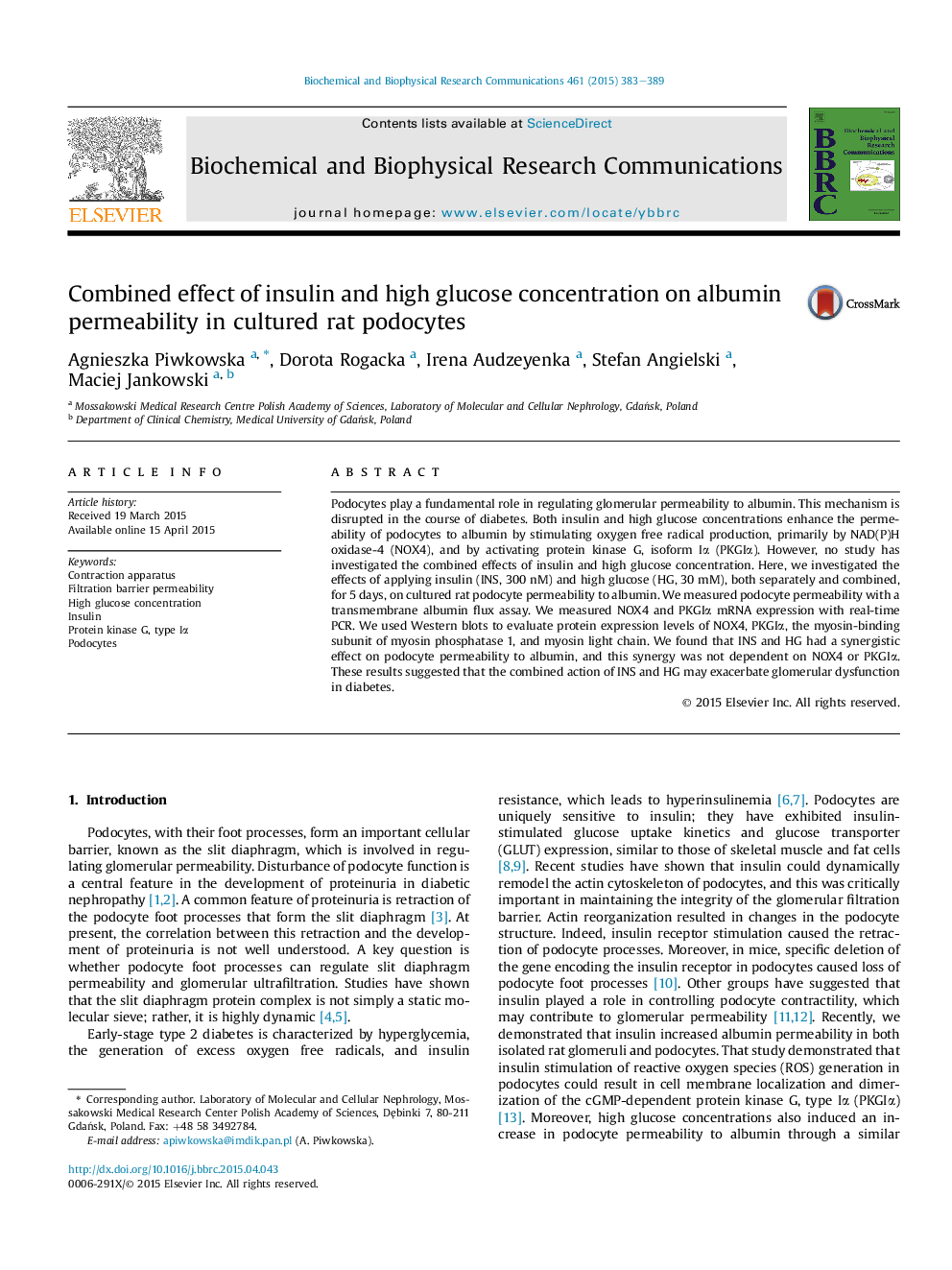| Article ID | Journal | Published Year | Pages | File Type |
|---|---|---|---|---|
| 10751449 | Biochemical and Biophysical Research Communications | 2015 | 7 Pages |
Abstract
Podocytes play a fundamental role in regulating glomerular permeability to albumin. This mechanism is disrupted in the course of diabetes. Both insulin and high glucose concentrations enhance the permeability of podocytes to albumin by stimulating oxygen free radical production, primarily by NAD(P)H oxidase-4 (NOX4), and by activating protein kinase G, isoform Iα (PKGIα). However, no study has investigated the combined effects of insulin and high glucose concentration. Here, we investigated the effects of applying insulin (INS, 300 nM) and high glucose (HG, 30 mM), both separately and combined, for 5 days, on cultured rat podocyte permeability to albumin. We measured podocyte permeability with a transmembrane albumin flux assay. We measured NOX4 and PKGIα mRNA expression with real-time PCR. We used Western blots to evaluate protein expression levels of NOX4, PKGIα, the myosin-binding subunit of myosin phosphatase 1, and myosin light chain. We found that INS and HG had a synergistic effect on podocyte permeability to albumin, and this synergy was not dependent on NOX4 or PKGIα. These results suggested that the combined action of INS and HG may exacerbate glomerular dysfunction in diabetes.
Related Topics
Life Sciences
Biochemistry, Genetics and Molecular Biology
Biochemistry
Authors
Agnieszka Piwkowska, Dorota Rogacka, Irena Audzeyenka, Stefan Angielski, Maciej Jankowski,
